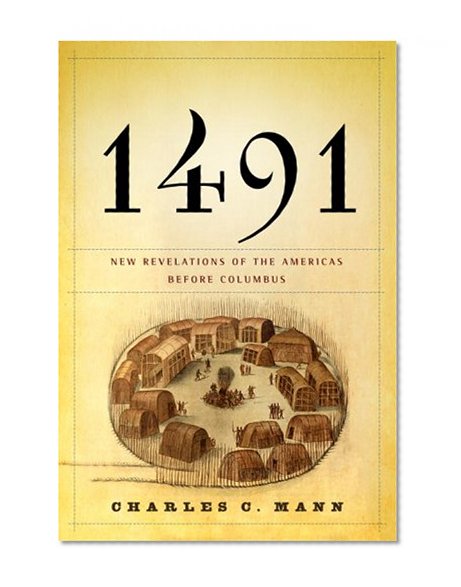1491: New Revelations of the Americas Before Columbus / Charles C. Mann
| List Price: | |
Our Price: $27.51 | |
|
For Bulk orders
| |
|
Used Book Price: $3.80 | |
| 1491: New Revelations of the Americas Before Columbus / Charles C. Mann | |
| Publisher: Knopf | |
| Availability:Usually ships in 24 hours | |
| Sales Rank: 119433 | |
|
Mann is well aware that much of the history he relates is necessarily speculative, the product of pot-shard interpretation and precise scientific measurements that often end up being radically revised in later decades. But the most compelling of his eye-opening revisionist stories are among the best-founded: the stories of early American-European contact. To many of those who were there, the earliest encounters felt more like a meeting of equals than one of natural domination. And those who came later and found an emptied landscape that seemed ripe for the taking, Mann argues convincingly, encountered not the natural and unchanging state of the native American, but the evidence of a sudden calamity: the ravages of what was likely the greatest epidemic in human history, the smallpox and other diseases introduced inadvertently by Europeans to a population without immunity, which swept through the Americas faster than the explorers who brought it, and left behind for their discovery a land that held only a shadow of the thriving cultures that it had sustained for centuries before. --Tom Nissley
A 1491 Timeline
| Europe and Asia | Dates | The Americas | ||
| 25000-35000 B.C. | Time of paleo-Indian migration to Americas from Siberia, according to genetic evidence. Groups likely traveled across the Pacific in boats. | |||
| Wheat and barley grown from wild ancestors in Sumer. | 6000 | |||
| 5000 | In what many scientists regard as humankind's first and greatest feat of genetic engineering, Indians in southern Mexico systematically breed maize (corn) from dissimilar ancestor species. | |||
| First cities established in Sumer. | 4000 | |||
| 3000 | The Americas' first urban complex, in coastal Peru, of at least 30 closely packed cities, each centered around large pyramid-like structures | |||
| Great Pyramid at Giza | 2650 | |||
| 32 | First clear evidence of Olmec use of zero--an invention, widely described as the most important mathematical discovery ever made, which did not occur in Eurasia until about 600 A.D., in India (zero was not introduced to Europe until the 1200s and not widely used until the 1700s) | |||
| 800-840 A.D. | Sudden collapse of most central Maya cities in the face of severe drought and lengthy war | |||
| Vikings briefly establish first European settlements in North America. | 1000 |
| ||
| Black Death devastates Europe. | 1347-1351 | |||
| 1398 | Birth of Tlacaélel, the brilliant Mexican strategist behind the Triple Alliance (also known as the Aztec empire), which within decades controls central Mexico, then the most densely settled place on Earth. | |||
| The Encounter: Columbus sails from Europe to the Caribbean. | 1492 | The Encounter: Columbus sails from Europe to the Caribbean. | ||
| Syphilis apparently brought to Europe by Columbus's returning crew. | 1493 | |||
| Ferdinand Magellan departs from Spain on around-the-world voyage. | 1519 |
| ||
| 1525-1533 | The smallpox epidemic sweeps into Peru, killing as much as half the population of the Inka empire and opening the door to conquest by Spanish forces led by Pizarro. | |||
| 1617 | Huge areas of New England nearly depopulated by epidemic brought by shipwrecked French sailors. | |||
| English Pilgrims arrive at Patuxet, an Indian village emptied by disease, and survive on stored Indian food, renaming the village Plymouth. | 1620 | |||
| *Courtesy Cahokia Mounds State Historic Site, Collinsville, Ill., painting by Michael Hampshire. **Courtesy Museum of Indian Arts and Culture, Santa Fe, N.M. (Bernardino de Sahagún, Historia General de las Cosas de Nueva España, 1547-77). |
Now you can buy Books online in USA,UK, India and more than 100 countries.
*Terms and Conditions apply
Disclaimer: All product data on this page belongs to
 .
.No guarantees are made as to accuracy of prices and information.












